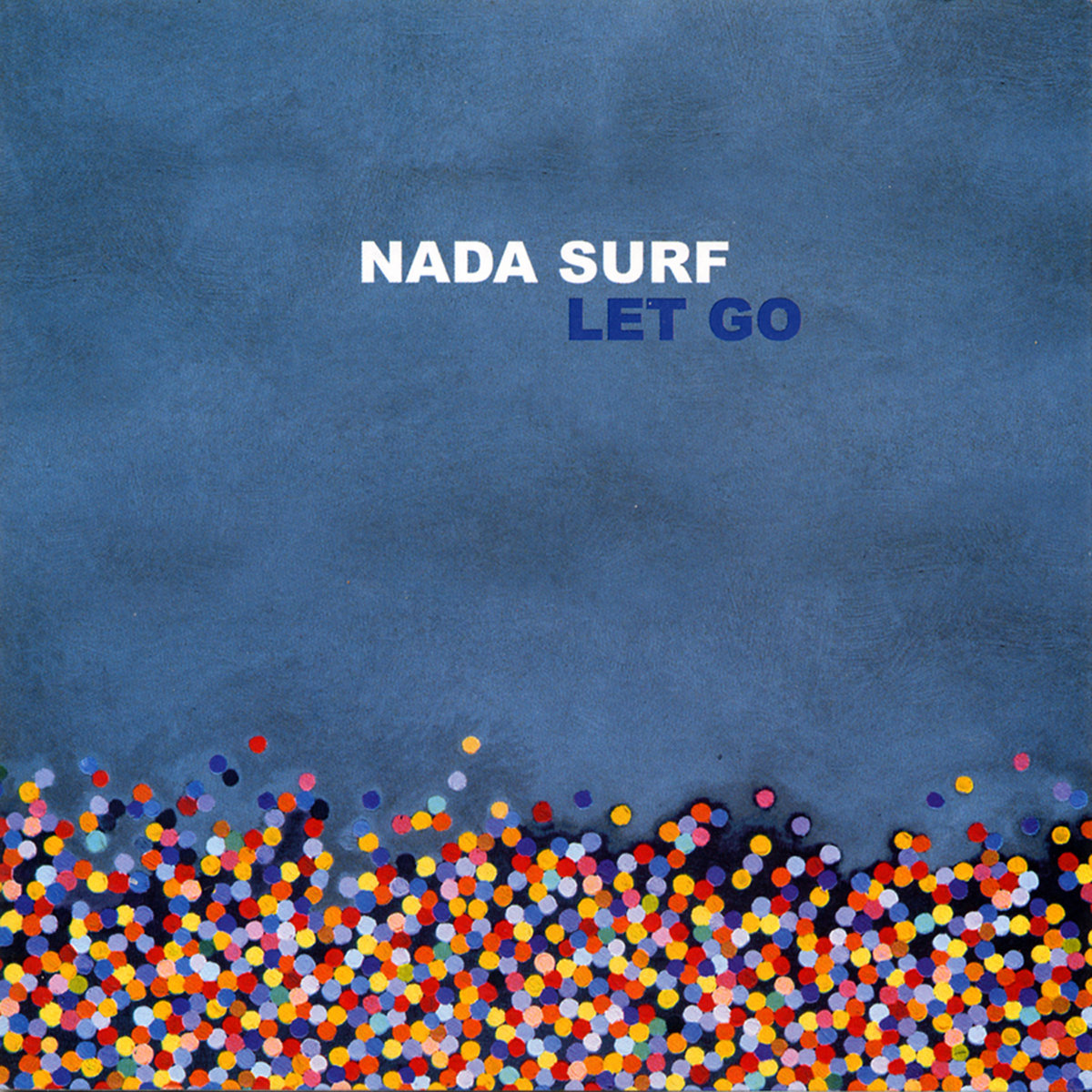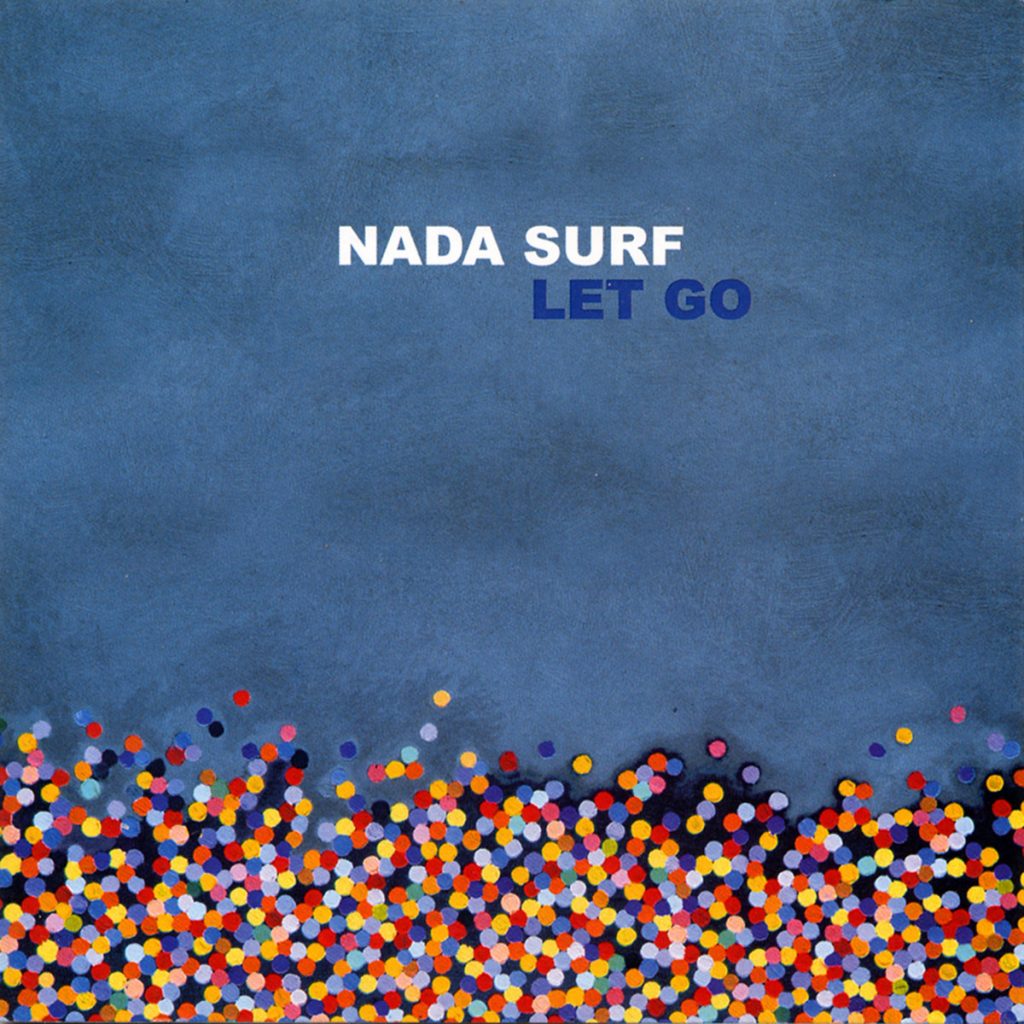
Longtime MAGNET contributor Hobart Rowland takes a deep dive into the influential albums championed by the magazine over the years, with exclusive, in-depth interviews with the artists, producers and other key players. For episode four, Rowland gets the real story behind the making of Nada Surf’s career-defining album, Let Go, which turns 20 this fall.
Track By Track: Nada Surf’s Let Go
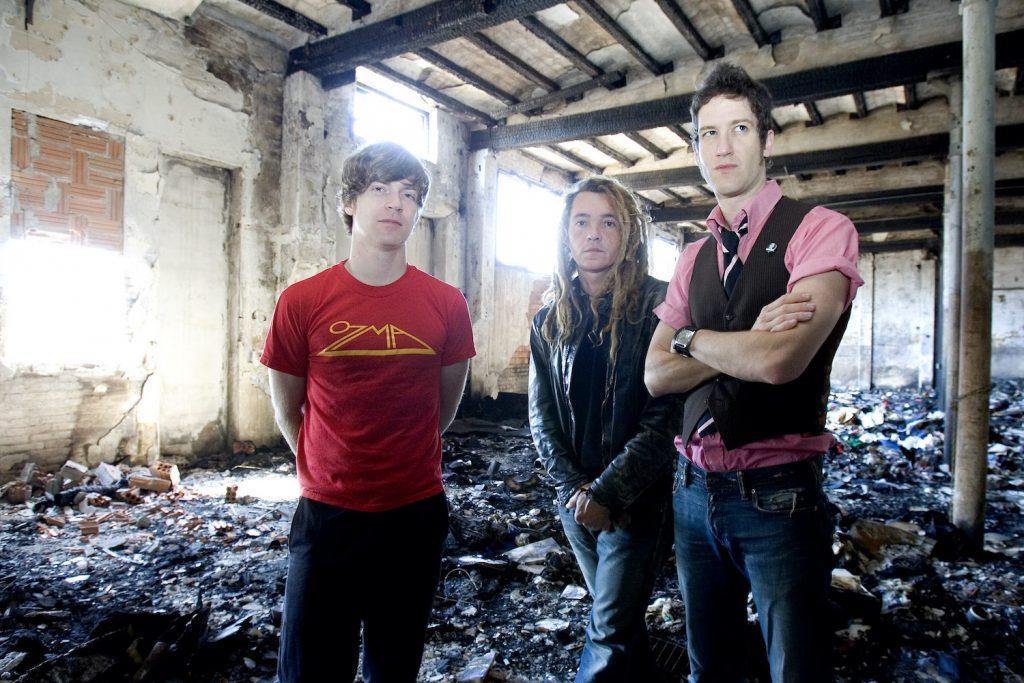
In the months before recording Let Go, Nada Surf was free enjoy the ultimate luxury: time. After its 1996 debut, High/Low, scored the group its only mainstream hit with “Popular,” it wasn’t long before the band’s relationship with Elektra Records began to deteriorate. No one at the label could hear a hit single on High/Low’s 1998 follow-up, The Proximity Effect. The album floundered, and Nada Surf was dropped.
Free of Elektra, vocalist/guitarist Matthew Caws, bassist Daniel Lorca and drummer Ira Elliot attempted workaday lives in New York City as they started on the music that would become Let Go. With no deadlines or anyone looking over their shoulders, the three spent long hours in their practice space working through songs and listening to music.
Most of Let Go was recorded in Los Angeles with Chris Fudurich, engineer for The Proximity Effect sessions. Funding came in the form of the “wrinkled singles and fives” made from a cross-country tour on the way to the West Coast. The band did more recording with Juan Garcia at the Magic Shop in New York, where Caws had been an intern a few years before. Three of those songs (“Blizzard Of ’77,” “Killians Red” and “Happy Kid”) were mixed by Death Cab For Cutie’s Chris Walla.
Let Go cost about $10,000 to make, a fraction of The Proximity Effect’s $200,000 tab. Released in the U.S. in late 2002 by Barsuk Records, the album wasn’t exactly a rousing commercial success, peaking at number 31 on Billboard’s independent-albums chart. For everyone involved, however, it was less about hits than creative rejuvenation. Nada Surf has since released a half dozen LPs on Barsuk.
What follows is a track-by-track assessment of an album that represented a seismic period of transformation for Nada Surf, in the words of Caws and the others closely involved.
—Hobart Rowland
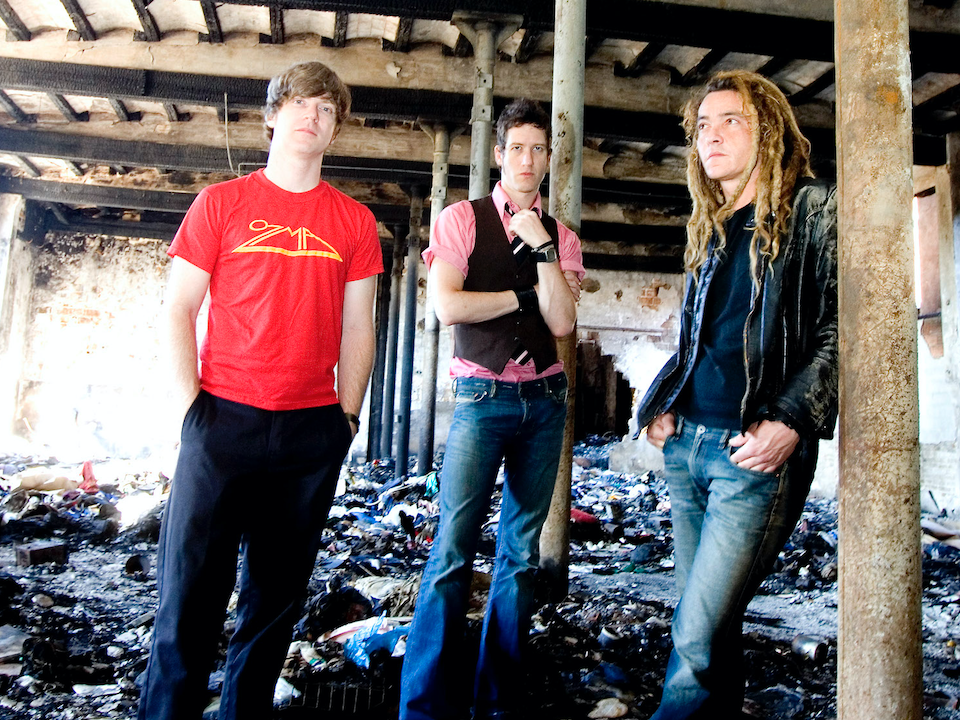
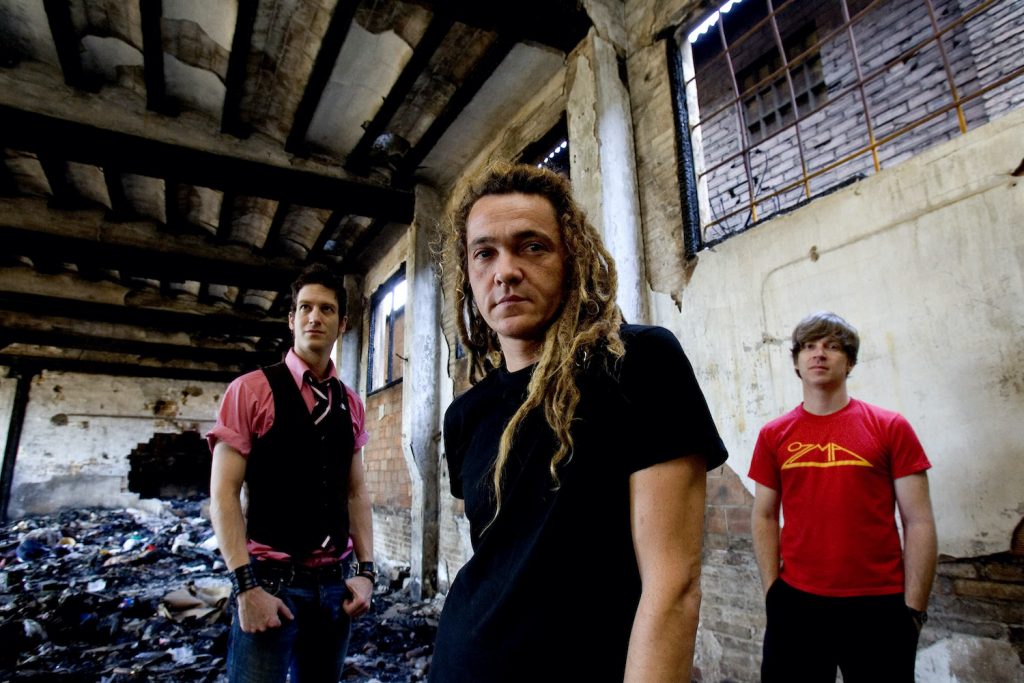
“Blizzard Of ’77”
Matthew Caws: We were on tour for The Proximity Effect, and I was sharing a hotel room with Daniel in Amsterdam. We’d stayed up with some friends, sitting around a fountain and drinking a little bit. I had these chords, and I wasn’t ready to go to bed. So I went into the bathroom and did the demo … quietly. That’s why it has a kind of a hushed approach.
Chris Walla: Matthew was very, very particular about the balance of the guitars on that song. He’s a supreme guitar geek—a world-class guitar obsessive.
Caws: We toured with Elliott Smith in France during The Proximity Effect, and we’d all been so struck by him. So I think that there was some kind of unspoken sense that, if a song came along with just guitar, that it was OK to leave it that way. We wanted to do something different for this record. It just felt right.
“Happy Kid”
Caws: I’ve always been this kind of depressive personality, but I’m pretty cheerful. I’m excited about the rest of the day, but I’m apprehensive about tomorrow. I’m psyched about the next week, but I’m apprehensive about the next month. I’m psyched about the next year. I trust myself not to really screw up my life, but I don’t trust myself to really nail it. l have layers like that.
Walla: The structure of that song is kind of weird because the verse is the chorus and the chorus is kind of an anti-chorus.
Caws: The melody was accidentally lifted a bit from Brian Eno’s “Baby’s On Fire.” I didn’t realize it until a couple of years later.
“Inside Of Love”
Ira Elliot: I believe it was the first thing we cut, because we’d been approached by these filmmakers at this film school in L.A. who’d pitched us this video for “Inside Of Love,” but we only had a demo version.
Caws: The song is based on what I was going through relationship-wise for a few years, or maybe what I sensed I was doomed to go through—either not meeting the right person or not being ready when I finally met the right person. My parents’ marriage was unhappy much of the time, and I grew up seeing how difficult it was. They split when I was pretty young, and I continued to see how it haunted them. That made me scared of getting it wrong—but I wanted it so badly. Now, I’ve finally gotten there.
Josh Rosenfeld (Barsuk co-founder): (Nada Surf manager) Ben Weber sent Barsuk a VHS tape of the video for “Inside Of Love,” and we loved it immediately.
Caws: The music was a lot of me sitting on the couch with a Danelectro guitar I bought for $115 from Guitar Center. I had no jazz knowledge, but I’d learned a little bit of “The Girl From Ipanema” and a few other bossa nova standards, and there are a few things on “Inside Of Love” that hint at that. The whole song used to be more complex, but when we were recording the song with Chris (Fudurich), we were sensing that the song was too fussy—that there was too much motion—so we started simplifying it. I feel lucky that I managed not to screw that one up.
“Fruit Fly”
Caws: It’s kind of a stoner song. I was sitting at the kitchen table eating Chinese food, and there was some takeout from the night before I hadn’t gotten around to throwing out. I noticed these fruit flies, and I got a guitar and wrote it in maybe twice the amount of time it takes to play it. Then I sat back down and finished my meal, and I don’t really think I changed anything. I’d always wanted to write from the point of view of someone else, and when I was finally successful, it was with a character so simple.
Chris Fudurich: After we left the studio, Matthew spent another two weeks at my house working on overdubs and fixes. The intro to “Fruit Fly” was actually recorded at my place.
Caws: My vocal range has crept up over the years, because I’d write stuff at home—and when I sing quietly at home, it’s easy. Then I’d get to practice and start singing it and be like, “Whoa, let’s drop it a few frets.” But then Daniel would say, “I like it like that—I like it when you’re struggling.”
Fudurich: Matthew was very concerned about his vocals, and he’d get a little uptight in his head. So after we got a basic arrangement down, I’d have him go in there and sing a scratch vocal for all the songs, three or four times. Then, after we’d gotten all the tracks together, he’d say, “OK, time to do my vocals.” And I’d say, “We’ve already done your vocals, dude.”
“Blonde On Blonde”
Caws: I was having an off day, not feeling so great, and I had to go out in the rain and buy a birthday gift for somebody. I took the subway in from Williamsburg, and I walked around to some stores in Manhattan. I had this really good raincoat, and I was listening to Dylan’s Blonde On Blonde on a Sony Sports Discman. It’s such a rich album. It was comforting to know that, for the rest of my life, I’d be able to listen to Blonde On Blonde and still get something out of it.
I’ve always felt that the transition from a verse to a chorus is a moment with so much potential, and with “Blonde On Blonde,” the verses are like, “Here’s what’s happening,” and the choruses are like, “Here’s why it’s OK.”
“Hi-Speed Soul”
Elliot: I remember getting up at 10 o’clock, spending 90 minutes figuring out how we were going to play it out, and then Chris came in at noon and tracked it.
Caws: It was inspired by a visit to a nightclub in Stockholm, where I met Victoria Bergsman, who was in the Concretes. We ended up dating much later, but on this particular night, we just met as friends. Somebody was DJing and messing with the speed of stuff, so I was trying to capture a nightclub feeling. I was struck by this very peaceful sense she had about her, and there was something about having this peaceful sense in a really loud place—like being in a bubble. It’s incredible how when some people speak really quietly, you can still hear them even when you shouldn’t be able to.
Elliot: I’m a disco drummer at heart. I learned to play the drums to ’70s disco records. That was my chance to play more of a disco beat.
“Killian’s Red”
Caws: I had friend who was in another relationship, and we sometimes met at this bar a block away from where I lived. There was nothing untoward going on, but there was a little bit of an impossible friendship, and I was heartbroken about it. The song is from a conflicted point of view emotionally.
“The Way You Wear Your Head”
Fudurich: That’s probably my favorite song on the album.
Caws: I was really into this band Lyres from Boston. They had this song “How Do You Know?” and I looped a tiny bit of it. There’s also a vocoder in there. For a while, I was tempted to do the whole vocal that way. There’s also a lyrical nod to Cheap Trick’s “I Want You To Want Me.” It goes, “I want to want you, I need to need you, I’d love to love you.”
“Neither Heaven Nor Space”
Caws: I went skydiving once, and the freefall period was heart-stopping, especially after the scary flight up, when you know you’re going to jump out of a plane. But when you pull the cord and the chute opens, you’re all of a sudden in heavenly, breezy quiet, floating, steering and gently descending. The song’s title represents a place. It’s not exactly imaginary, but I associate an imaginary feeling with it. Not heaven, because who knows if or where that is, but where one imagines heaven to be if you were a child. Not space, because it’s not quite that high. It’s an altitude I’ve always imagined or tried to imagine myself in when I was making music. Peaceful. One of my favorite touches in that song is something mixer Louie Lino added—the very faint sound of a train rounding a track, a high metallic squeak, right when I sing, “And if you sit long enough, you can hear ghost trains.” Sometimes, in the middle of New York, you hear the sound of a train. Even though you know they have to get to Grand Central Station somehow, they can still sound out of place, especially if you know you’re really far from a track.
“Là Pour Ça”
Caws: Daniel wrote the words and melody to that one. I helped out with the music. He’d been collecting French phrases he liked on little pieces of paper for a long time. There are some beautiful turns of phrase in the song. The vocoder from “The Way You Wear Your Head” is in there somewhere, too.
“Treading Water”
Caws: There’s the line, “I talk to missionaries when they’re standing at my door” … My dad grew up in a fundamentalist Christian cult that he left as a young adult. I grew up seeing what a burden losing contact with his family was on him. I always wished that I could think of the one thing to say that would gently pull someone around to a more open-minded and tolerant view of the world. I haven’t found it yet, but I enjoy speaking to people with drastically different views for the challenge, practice and education.
“Paper Boats”
Caws: One of the key images for me in that song is “when the express train passes the local, it moves by just like a paper boat.” There’s a particular spot on the uptown line in Manhattan where the local track moves down, or the express track moves up. If you’re lucky enough to be on the local at just the right moment, the express floats up and past you, not appearing to move much faster than someone walking, even though both trains are going quite fast. I’m not good at floating on my back, but that’s how I imagined myself in that song. “All I am is a body floating downwind,” along a river maybe.
“No Quick Fix” (Bonus Track)
Caws: It was on the European album but not the U.S. version. Conversely, “Neither Heaven Nor Space” was only a limited-edition bonus track on the European LP.
Fudurich: I remember calling that song “No Quick Mix.” It had something cool going on, but I don’t think it ever really hit its mark.


